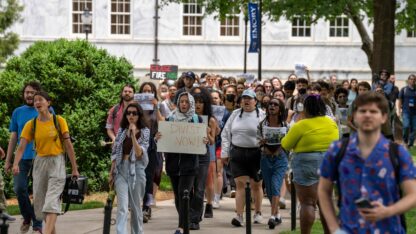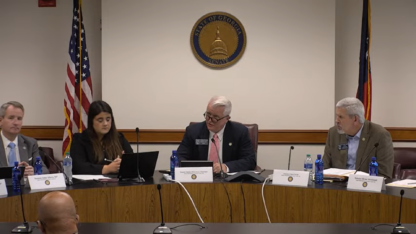Could Explosive Growth Lead To A Southern Megalopolis?
Some say it’d be “Charlanta.” Others think it should be “Atlanteigh.” Whatever you end up calling it, the Southern megalopolis predicted by a recent study certainly sounds daunting.
Researchers from the U.S. Geological Survey and North Carolina State University found that if urbanization in the Southeast continues as it has over the past several decades, we could have a “Southern megalopolis” stretching from Atlanta to Raleigh by 2060.
Their conclusions are based on an urban growth model that simply imagined what our cities would look like if business continued as usual–that is, if Southeastern cities kept following a decades-long tradition of urban sprawl. You can check out visualizations of their projections in the slideshow above.
Among the consequences of a more than 400 mile stretch of urbanization is fragmentation of wildlife habitat, bringing humans and animals closer and potentially into conflict (think more bear sightings in our cities).
Researchers also say that because urban heat islands would be expanding, temperatures could be expected to rise across the region. If you add that to the anticipated effect on temperatures from global warming, you could end up with a pretty uncomfortable climate.
But while the word “megalopolis” may bring to mind a dystopian metropolis, much of the massive urban center wouldn’t look very different from our suburban areas today–sprawling developed areas dotted with strip malls and big box retailers.
The study’s lead researcher Adam Terando, a research ecologist with the U.S. Geological Survey, joined our City Cafe host to further explain what a megalopolis is and discuss whether that’s really what’s in store for our region.
This is just the latest in a series of conversations on urban sprawl in the Southeast. Check out some of the previous ones here.
9(MDAxODM0MDY4MDEyMTY4NDA3MzI3YjkzMw004))





